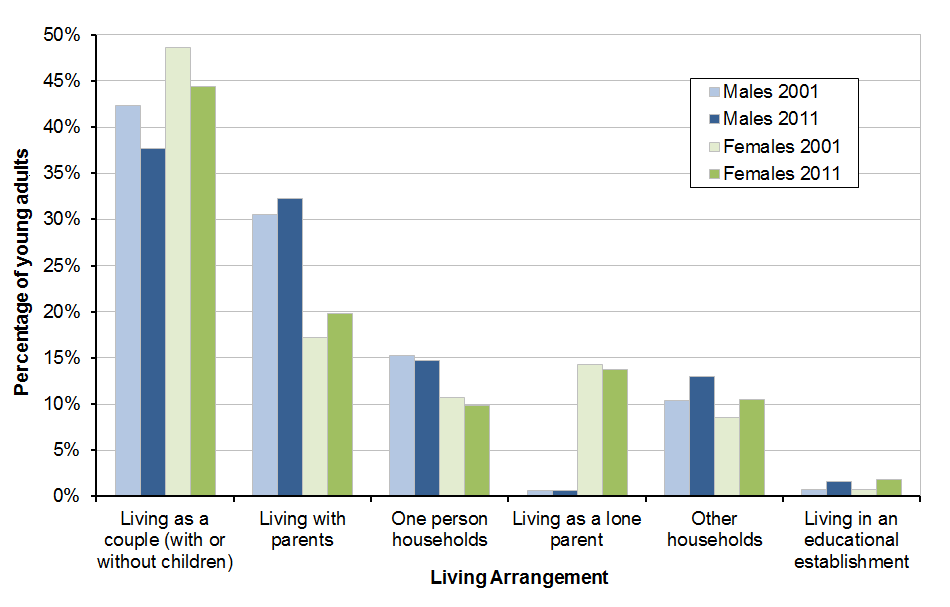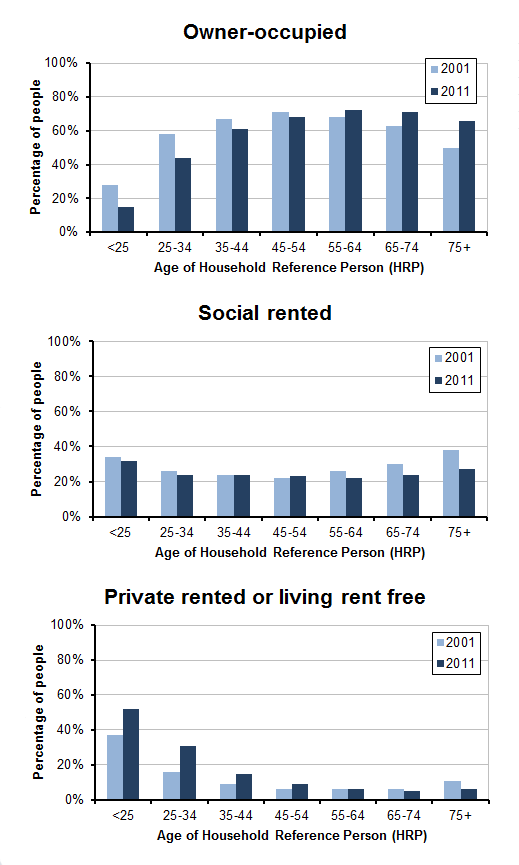4.1.1 Analysis of the results from the 2001 and 2011 Census gives some further context to recent changes in living arrangements.
4.1.2 Figure 18 illustrates changes in the living arrangements of young adults (aged 20-34), between the 2001 and 2011 Censuses. The biggest fall has been in the number of young adults living as a couple (with or without children), along with a smaller falls in the number of lone parents families in this age group, and the numbers living alone. In contrast, there have been increases in the numbers living with parents, and in ‘other’ household types (which will include households containing unrelated adults), and in educational establishments such as student halls of residence.

4.1.3 Figure 19 illustrates the changes in tenure by age group, between 2001 and 2011. There are clear variations – younger people are far more likely to live in private rented accommodation, and older people are more likely to live in owneroccupied accommodation. However, there have been a number of changes between 2001 and 2011. The overall percentage of people living in owneroccupied accommodation has stayed pretty stable, but there have been big falls in the numbers of younger people in the owner-occupied sector, and the increases have been in the older age groups (age 55+). In contrast, the private rented sector has grown a lot, with the biggest increase in those aged 25-34. The numbers living in the social rented sector have fallen, particularly in the older age groups.
4.1.4 In summary, over the decade from 2001 and 2011, young adults were less likely to be living with a partner or on their own, and to be living in owner-occupied accommodation. They were more likely to be renting, and more likely to be living with their parents or in multi-adult households. This has led to a slower rate of growth in household numbers. This is linked to long-term trends and the economic downturn, with increases in unemployment, reductions in the number of new homes being built and a constrained mortgage market, amongst other factors, all contributing. These trends are now reflected in the household projections, and the method now has the flexibility to incorporate any changes in trends between census years.
4.1.5 Some more detailed analysis of census information on living arrangements and tenure will be published later this year, on the Scotland's Census website.
